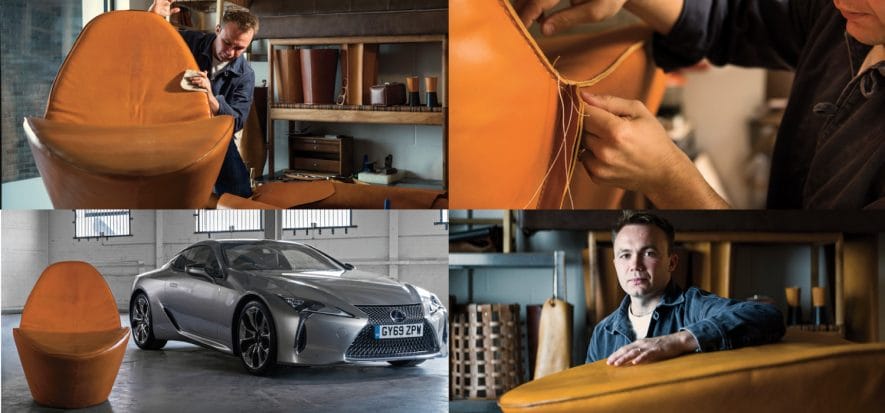He is up to cutting, smoothing, pressing, gluing, sewing, waxing. Otis Ingrams is one of the best leather artisans in the United Kingdom. Lexus dedicated a short film to him. The video shows Ingrams at work while he is up to making a one-of-a-kind leather seat, taking inspiration from coupé Lexus LC. A real “takumi”.
A seat by Lexus
The video showing Ingrams at work is the first one of a series composed of five video clips (from which pictures are taken), which Lexus is going to publish in the next few months. The series focuses on telling about “takumi” expertise and proficiency that can be seen in the cars made by the car manufacturing company. Video clips are a tribute to top-notch qualities provided by British artisans who work or collaborate with the brand. In all Lexus manufacturing plants, craftsmen at work take most pride in being called “takumi”.
Such Japanese term refers to unrivalled artisans whose specific expertise cannot be matched. In Japan, you can exclusively apply this flattering term to artisans who may rely on a 25-year-old experience at least.
Artisan work
“The particular I have focused my work on is the interior dashboard of the car door. It looks smooth and its fluid outlines are really attractive”, commented the artisan. Ingrams had only a chance to make the car seat. “I was trying to blend and put together the sense of speed, dynamism and acceleration you can feel as soon as you sit in the car or when you simply look at it; and I was striving to bring all that into a piece of furniture – he continued –. I have read that proficiency standards regarding Lexus upholstery are unmatched and without equal: we devote plenty of time to car seats, which must be most comfortable and must have the best seams. Obviously, we make use of the best leather for them. Considering all this, I therefore wanted to attempt to create it again”.
After cutting leather by using a few models, Ingrams carries out a kind of process called skiving. By making use of a knife, he accurately reduces leather thickness, from a couple of millimetres down to about half millimetre, therefore turning the material much more flexible.
“At this point, then, leather has turned smooth and stretches around the structure”, he pointed out. “Subsequently, we are up to gluing and clamping it in the right position, and edges must be seamed very carefully. Ultimately, we use a special tool, called flatiron, to mark all outlines around edges”, told the artisan. After a few final adjustments, such work of art is ready, and you can put it on display.
Read also:










